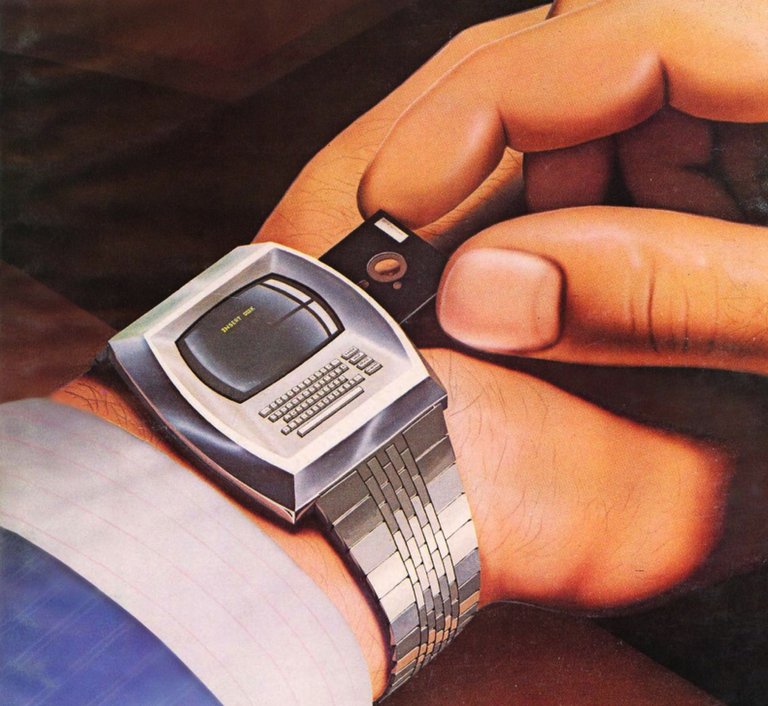
In the late-1970s, a computer’s place was almost exclusively in the corporate office. With the exception of a few hardcore hobbyists, most middle class North American consumers were intimidated by their cold logic and strange language.
Even so, those with just a bit of imagination could see the potential of computing and networking to radically everyday life. One had only to crunch the numbers and study the industry to see what was ahead. Microprocessors were getting faster, getting cheaper, and were revving up to invade homes across the world.
In 1975, technology consultant and entrepreneur Carl Helmers and amateur radio magazine publisher Wayne Greene teamed up to create a publication that would cater to the growing public interest in computing and programming. Their goal was to create a magazine that blended in-depth computer science with do-it-yourself code recipes and general interest technology news. In September of 1975, Byte, “The Small Systems Journal,” published its first issue.
Helmers particularly was giddy about the nascent computing revolution. A one time consultant for NASA, he was brimming with dreams about computers making the impossible possible. Eager to inject that magical vision of the future into the hearts and minds of his readers, he needed someone to visualize that sense of wonder and new possibilities. To that end, Helmers hired artist Robert Tinney to paint the Byte Magazine’s covers.
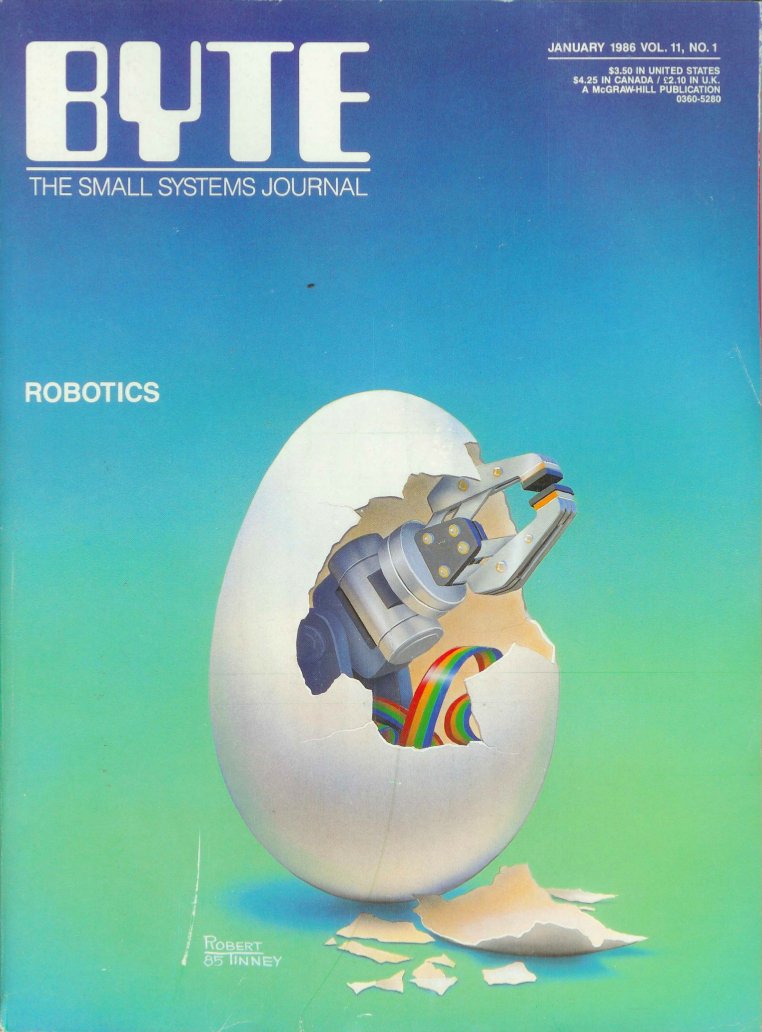
Tinney, an army veteran with a degree in Advertising Art, began painting for periodicals professionally in the 1970’s. His first cover for Byte was in December 1975, the Christmas issue.
Tinney’s background was not technical, a fact that likely made him even more suited to painting a human face on the world of ones and zeroes. M.C. Escher and Salvador Dali were among his influences, artists known for their playful, surrealistic dreamscapes and visual logic games. Tinney also had high regard for the master magazine illustrators of ages past, such as J.C. Leyandecker, Maxfield Parrish, and Norman Rockwell. These influential artists knew that a good illustration could say more and hit deeper than any amount of words.
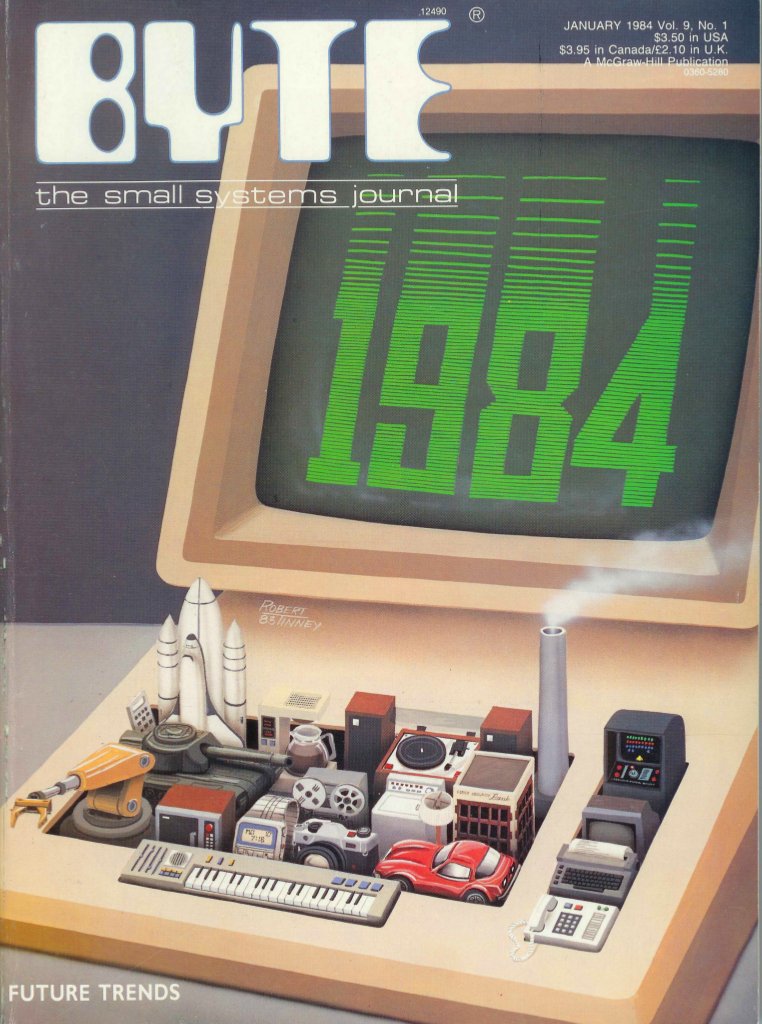
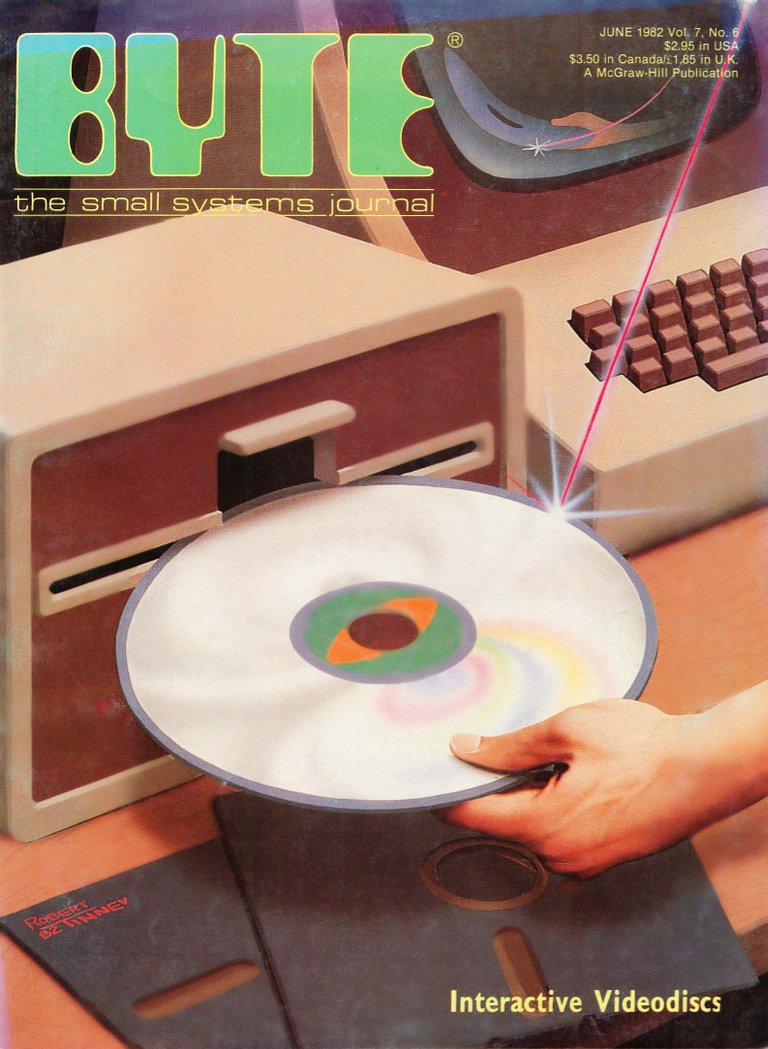
One of the best ways to confront and understand the esoteric is through play. Tinney brought the strange world of code and electronics down to Earth by creating a fantasy world where technology was a kind of useful magic. Robots could hatch from eggs like dinosaurs. Desktops could transform ones and zeroes into rivers of paper. Tinney’s metaphors not only illustrated Byte’s theme for the month, but got the reader’s gears turning about what might be soon be possible. These covers provided a healthy dash of science fiction to accent Byte’s science facts.
Contemporaneous computer magazines featured photographs of flashy new merchandise with large puddles of text advertising the contents. Byte set itself apart by offering vivid artistic metaphors that hinted at what was inside. Tinney earned a fair amount of fame among computer experts and hobbyists, who bought the magazine in droves every month. Byte became the most important computer magazine on the market in the 1980’s, reaching up to 500 pages per month at the height of its popularity. Tinny’s covers became so popular that he was able to sell prints and tshirts of them, and once even traded an original painting for a high-end computer of his own.
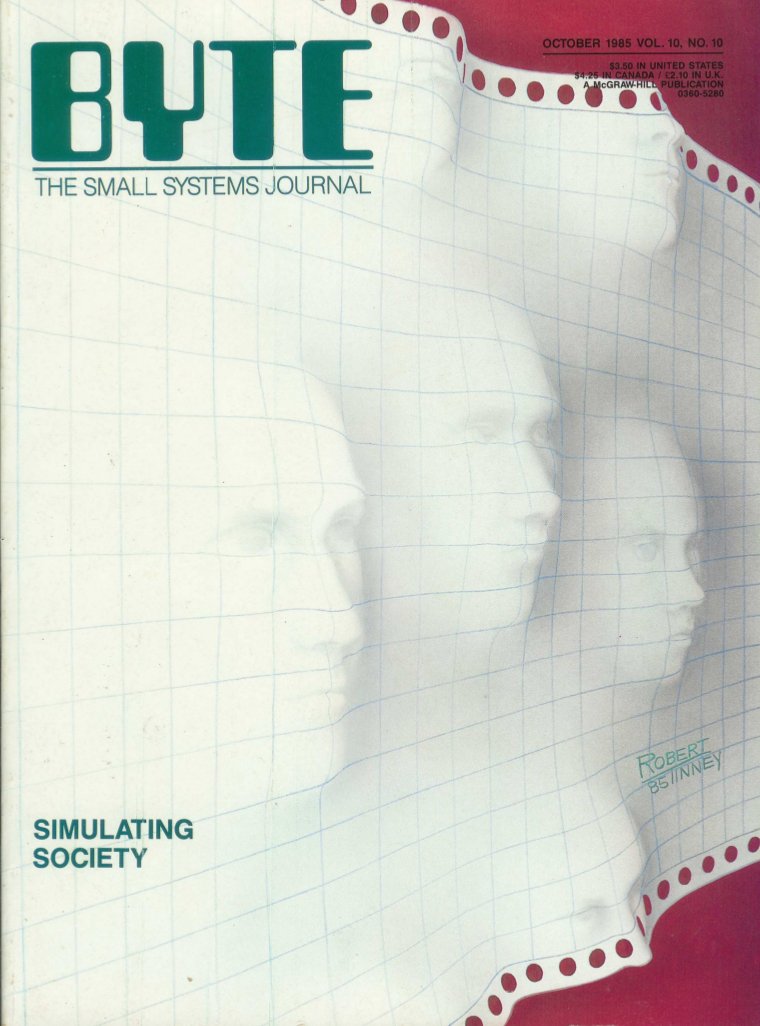
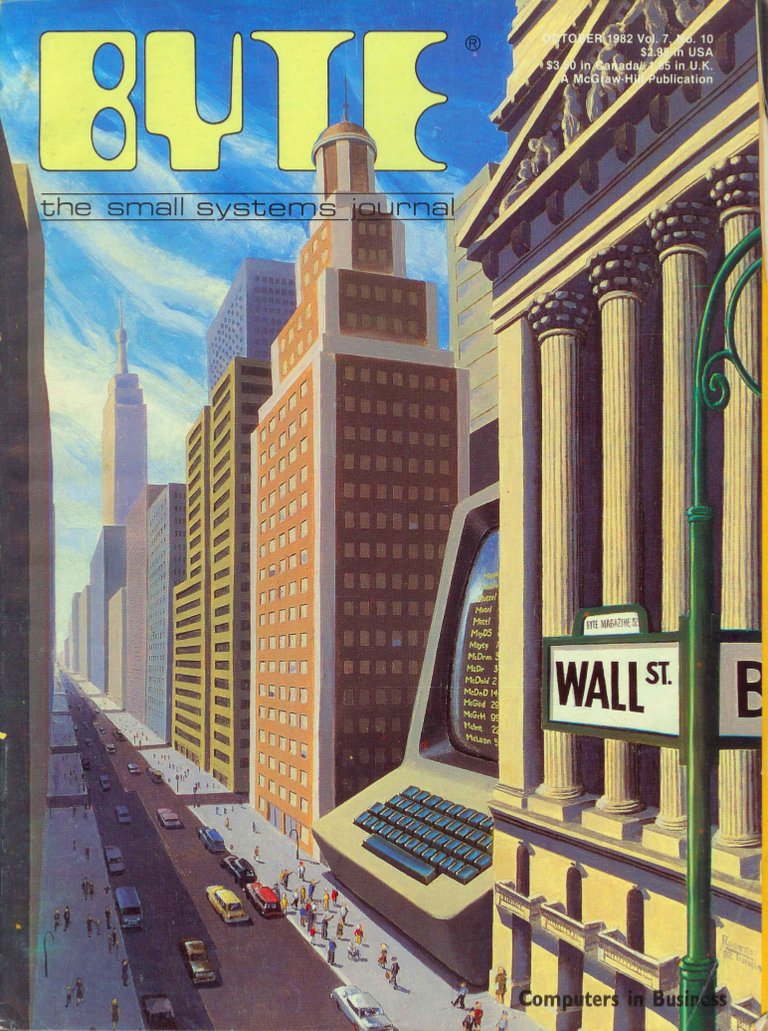
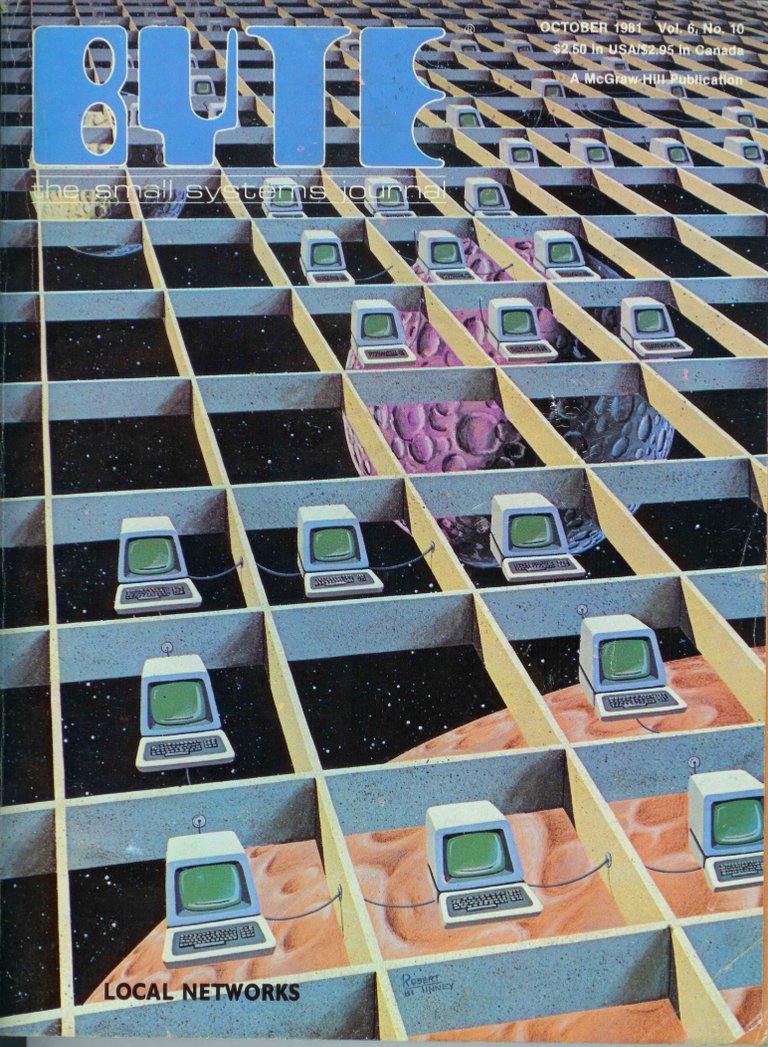
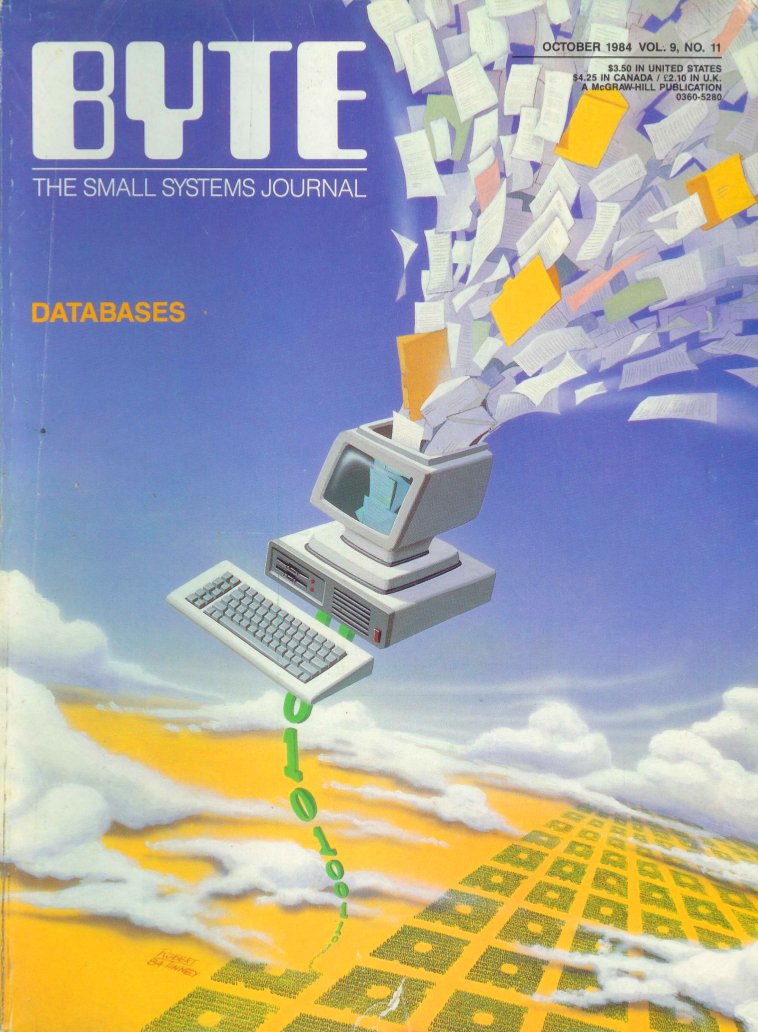
Tinney painted the majority of Byte’s covers between 1975 and 1990. In that time, he made about 80 cover images for Byte, and many more internal illustrations. By the 1990’s, however, Byte’s popularity began to decline, and frustrated editors traded in Tinney’s surrealist computer dreams for the dreary merchandise photographs of their competitors. In 1998, Byte shuttered operations for good.
These days, for the sake of posterity, whole issues of Byte are available for free at Archive.org. All of Byte’s covers from 1977 to 1998 are online as well. If you want to hear the story in the words of the artist himself, Vintage Computing & Gaming interviewed Tinney in 2006.
Byte’s covers, even today, speak to a world of potential. We, the jaded denizens of the future, often take for granted how explosive the information revolution was. Tinney’s fantasy world of floppy disks and desktops give us a peak into how we once saw the future. They’re the vivid dreams of a past generation, trying their best to see into the future.
(originally posted to Medium and Futurism.media)
Congratulations @talesofterror! You have received a personal award!
Click on the badge to view your Board of Honor.
Do not miss the last post from @steemitboard:
SteemitBoard and the Veterans on Steemit - The First Community Badge.
Congratulations @talesofterror! You received a personal award!
You can view your badges on your Steem Board and compare to others on the Steem Ranking
Vote for @Steemitboard as a witness to get one more award and increased upvotes!